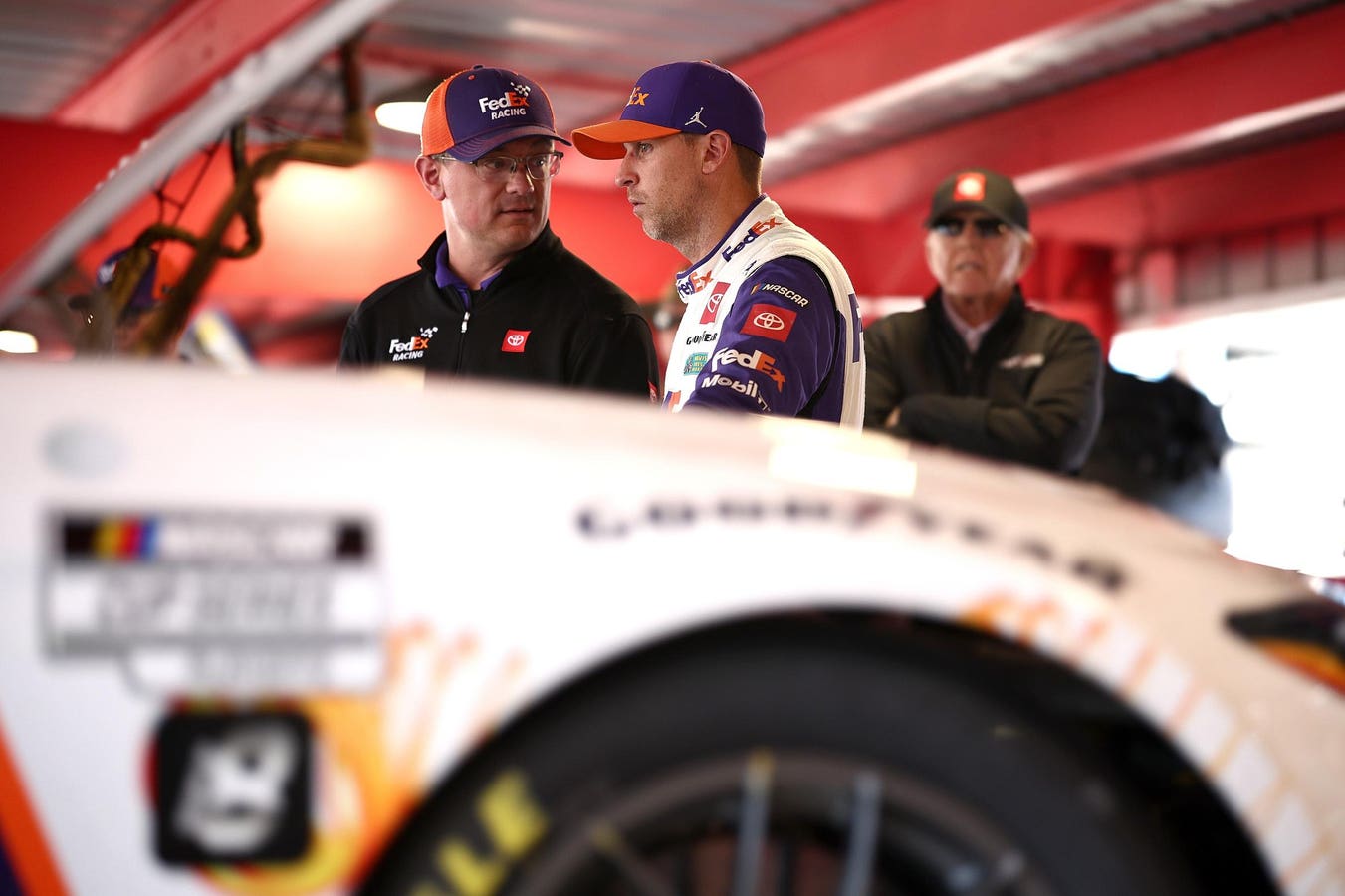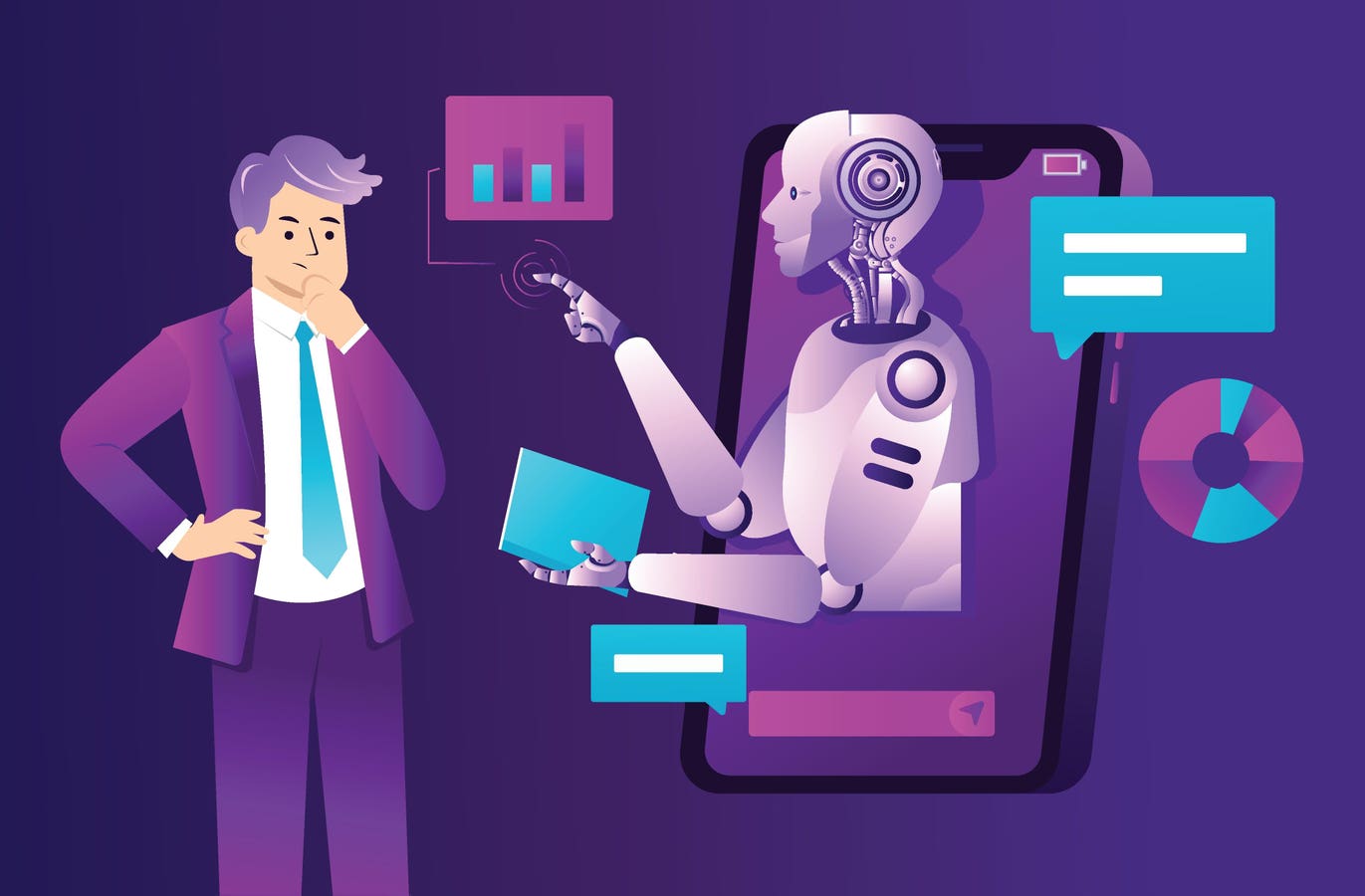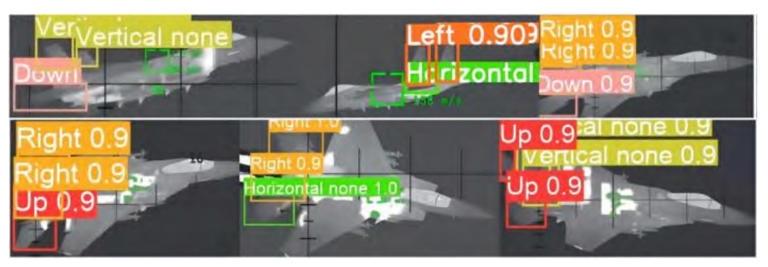JGR team owner and NASCAR Hall of Famer, Joe Gibbs looks on in the garage area after an on-track … More
Donut production and race car engineering share surprising similarities. Both operate under intense time pressure where every hour matters, requiring rapid turnaround to minimize delays. These industries need infrastructure that enables innovation, efficiency, and minimal downtime.
Krispy Kreme stores produce up to 1,000 dozen donuts hourly, demanding consistent, high-speed operations to meet daily demand. Similarly, NASCAR’s weekly race schedule leaves teams like Joe Gibbs Racing little time to redesign and implement improvements between competitions.
Breaking Down Silos: IT Meets Industrial Automation
Traditionally separate, IT and industrial automation are now converging as industries adopt more intelligent, connected systems. This integration enables businesses to achieve new levels of operational performance.
Modern manufacturing facilities deploy software to collect and analyze real-time data from machines. Through IoT devices, businesses monitor production lines, predict failures, and optimize processes automatically.
Digital twins have become central to this IT-OT convergence. These virtual replicas mirror real-world behavior in real time, allowing businesses to simulate operations before implementing physical changes.
Siemens: Leading Digital Twin Technology
Siemens’ Xcelerator portfolio stands out in digital twin technology for industrial design and control. A digital twin is a real-time, virtual representation of a physical object, like a race car or manufacturing line, that uses data from sensors and software models to simulate, monitor, and optimize performance throughout its lifecycle.
At the core of Siemens’ Xcelerator technology is a closed-loop system that continuously synchronizes virtual models with physical counterparts.This approach allows racing teams to simulate aerodynamics and tire wear under various track conditions before physical implementation. Similarly, manufacturers can model production changes virtually, reducing risk without disrupting operations.
As digital twins advance, they increasingly leverage AI and machine learning to enable self-optimization. Businesses are also exploring AR and VR applications, providing immersive insights for maintenance and decision-making.
The integration of IT and industrial automation is a significant step toward smart, connected factories and more resilient supply chains. By harnessing the power of data, digital twins, and automation, businesses are better equipped to respond to challenges, innovate faster, and drive sustainable growth in an increasingly competitive landscape. It also arrives with challenges.
Managing the Complex Product Lifecycle
As enterprises adopt intelligent operational technology, managing complex product development creates new challenges. Product lifecycle management solutions like Siemens’ Teamcenter provide integrated platforms to streamline workflows and enhance collaboration.
Joe Gibbs Racing: Engineering Excellence Under Pressure
Joe Gibbs Racing, a top NASCAR team, essentially builds a new car for every race. Mark Bringle, Technical Sponsorship Director, explained their process includes designing and fabricating parts using industrial 3D printers, laser cutters, and CNC machines. Missing a deadline could mean forfeiting a race.
JGR built workflows around Siemens’ software solutions — NX, Teamcenter, and Solid Edge — to design and optimize components under extreme time constraints.
During the 38-week NASCAR season, engineers previously had to wait until returning to headquarters to make adjustments. Now, theyj can design parts immediately at the track using Solid Edge on laptops, then transfer designs to NX for advanced modeling, all integrated through Teamcenter.
For JGR, this quick-turnaround is enabled by Teamcenter, which allows files to flow effortlessly between Solid Edge and NX, allowing JGR engineers to work efficiently regardless of their location.
“Teamcenter gives us the digital backbone we need to operate at the speed of racing,” Bringle noted. “When you’re building what amounts to a new race car every week, having a system that manages our engineering data is essential.”
Krispy Kreme: Precision Automation for Consistency
Not far from Joe Gibbs Racing is the world headquarters of Krispy Kreme, a global leader in fresh, high-quality doughnuts. While doughnuts are the final product, Krispy Kreme also prides itself on being a machine builder, designing and manufacturing its proprietary production equipment in-house. Much like Joe Gibbs Racing, Krispy Kreme relies on Siemens drives, controls, and software.
To maintain consistency of its donuts, Krispy Kreme needed to modernize production systems across 600+ global stores. The company partnered with Think PLC to implement Siemens drives and an automation portal for real-time monitoring, diagnostics, and control.
This solution increased precision in donut frying, improving accuracy by 12% while reducing waste and enhancing product consistency. It also improved safety with advanced monitoring systems that automatically stop processes within milliseconds of detecting issues.
Industry Parallels Despite Different Products
Despite operating in entirely different sectors, Krispy Kreme and Joe Gibbs Racing share a reliance on end-to-end industrial automation for flexibility and precision. Both face challenges of time constraints, precision requirements, rapid problem-solving needs, and efficiency demands.
Siemens’ Xcelerator portfolio integrates design, simulation, production, and data management, helping businesses improve productivity, reduce costs, and maintain high-quality standards.
Competition in this space has intensified as IT-OT convergence accelerates. ABB’s Ability platform, Honeywell’s Forge, and Emerson’s Plantweb offer similar capabilities, while cloud giants like Microsoft and AWS partner with industrial players to enhance connectivity and analytics.
Despite this crowded field, Siemens remains competitive with its comprehensive portfolio spanning the entire value chain within a unified data environment.
The Future of IT-OT Convergence
The convergence of IT and operational technology is accelerating across industries. As industrial processes become increasingly digitized, the walls between IT departments and plant operations are disappearing. Today’s systems require the reliability of traditional OT combined with the connectivity and analytics of IT.
Siemens well-positioned to capitalize on this trend, reflected in its recent earnings showing its Digital Industries segment seeing steady growth. In its most recent quarter, Siemens saw its software revenue grow 15% year-over-year, with its EDA software, in particular, growing an impressive 30%.
Companies that successfully navigate this convergence gain significant advantages: reduced downtime, improved quality, faster innovation cycles, and enhanced ability to meet changing customer demands. Krispy Kreme and Joe Gibbs Racing exemplify how organizations can transform operations by integrating physical and digital worlds.
Whether racing for a championship or ensuring fresh donuts delight customers worldwide, success increasingly lies where information technology and operational technology converge—with Siemens positioned at this critical intersection.








